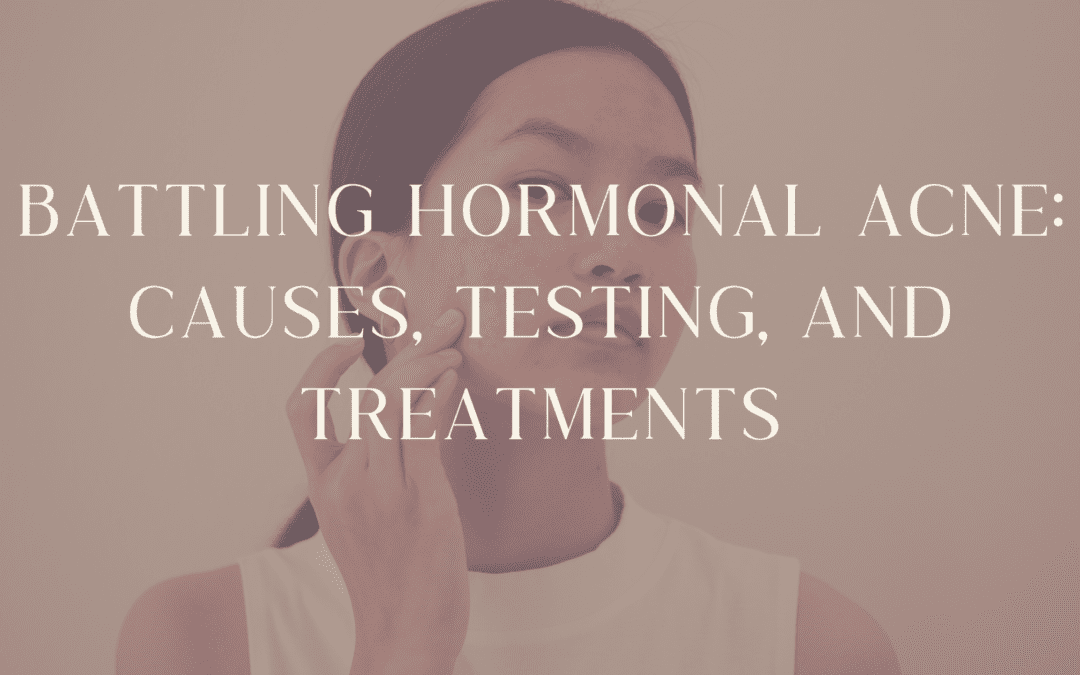download your free supplement list
Introduction:
Acne is a common skin condition that affects millions of people worldwide. While acne can manifest in various forms, hormonal acne is a particularly stubborn and frustrating subtype. There are different forms of acne characterized by deep, painful cysts and persistent breakouts, hormonal acne is closely linked to hormonal imbalances within the body.
In this blog post, we will delve into emerging benefits of topical low-dose naltrexone, to help you regain control of your skin.
Understanding Hormonal Acne:
Hormonal acne typically occurs when the body’s hormone levels fluctuate, especially during puberty, menstrual cycles, pregnancy, and menopause. Hormones such as testosterone and estrogen play crucial roles in regulating sebum production, a waxy substance that lubricates the skin. However, an imbalance in these hormones can trigger an overproduction of sebum, leading to clogged pores and the growth of acne-causing bacteria.
Testing for Hormonal Imbalances:
Determining the presence of hormonal imbalances is crucial for diagnosing hormonal acne. Common tests that healthcare professionals may recommend include blood tests, Dutch hormone test, and thyroid function tests. Far too often in my practice, I hear from patients that their testing was normal, but when I dig deeper with my panels, I find significant imbalances that are a huge reason for their uncontrolled acne. Always seek a second opinion from a provider specializing in advanced hormone testing options.
Common Causes of Hormonal Acne:
Several factors can contribute to hormonal acne, including puberty, menstrual cycles, polycystic ovary syndrome (PCOS), pregnancy, and menopause, but really any imbalance can produce unwanted acne.
Effective Treatments for Hormonal Acne:
Working with a provider to balance your hormones is a key part of improving your symptoms. Again, your team may consist of more than one person, such as a dermatologist, primary care provider, and a healthcare provider specializing in hormones. While there are various treatment options available, I want to share about a new one I have implemented into my practice that I have found to be successful, topical low-dose naltrexone.
How does topical low-dose naltrexone work on acne?
Regulation of Inflammation: Low-dose naltrexone has been shown to modulate the immune system and reduce inflammatory responses. Inflammation plays a significant role in acne development, and by targeting this aspect, topical naltrexone may help calm existing breakouts and prevent new ones.
Sebum Control: Studies suggest that low-dose naltrexone can inhibit sebum production. By regulating sebum levels, this treatment may help reduce the excessive oiliness of the skin, preventing clogged pores and acne formation.
Androgens: High androgen levels contribute to hormonal acne by increasing sebum production in the skin. Androgens, such as testosterone, stimulate the sebaceous glands to produce more sebum, leading to clogged pores and acne formation. Additionally, high androgen levels can cause the skin cells to stick together, further blocking the follicles and promoting the growth of acne-causing bacteria. These hormonal imbalances can also increase inflammation in the skin, exacerbating the severity and persistence of acne breakouts.
Antibacterial Properties: Naltrexone has demonstrated antibacterial effects against acne-causing bacteria. By inhibiting bacterial growth, topical naltrexone can contribute to a healthier skin microbiome and reduce the occurrence of acne flare-ups.
Minimal Side Effects: Compared to other acne treatments, topical low-dose naltrexone is generally well-tolerated and has minimal side effects. This makes it a promising option for individuals seeking alternative treatments or those who may experience adverse effects from other medications.
Complementary Approach: Topical low-dose naltrexone can be used alongside other acne treatments, such as topical medications or lifestyle modifications, to enhance the overall effectiveness of acne management. Its multi-faceted benefits make it a valuable addition to a comprehensive treatment plan.
Hormonal acne can be challenging to manage, but understanding its causes, undergoing proper testing, and exploring effective treatments are crucial steps toward achieving clearer skin. Do not start a treatment that does not feel right for you or is not something you want. For many, this is oral birth control. There are a lot more options that are safer and also going to treat the root cause of your acne. Alongside conventional treatments, the emerging benefits of topical low-dose naltrexone offer new hope for individuals struggling with hormonal acne.

